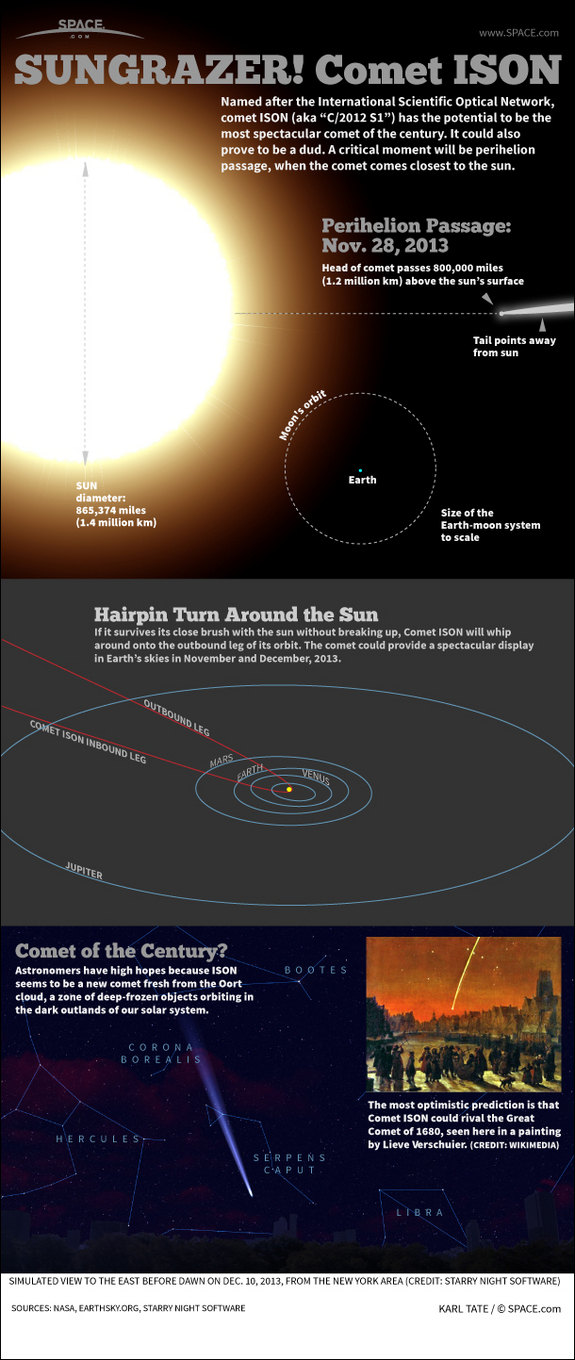Nasa’s Swift satellite took a break from its boring job of scanning the universe for gamma-ray explosions, and instead focused its polished eye towards a tiny bright dot in the distance. The dot is Comet ISON. An universal-loner, ISON is speeding towards our solar system and expected to give us a spectacular show across the skies at night.
The massive ice-rock is one of the biggest we’ve seen since 50 years ago according to the article by Space.com:
“Comet ISON has the potential to be among the brightest comets of the last 50 years, which gives us a rare opportunity to observe its changes in great detail and over an extended period,” said Lead Investigator Dennis Bodewits, an astronomer with University of Maryland at College Park (UMCP) who helped obtain the new image.
Some astronomers have predicted that ISON could be the “Comet of the Century” when it makes its closest approach to the sun in late November. But a recent analysis found that the comet is not brightening as expected, and may have a ways to go to meet such expectations.
Comet ISON was first discovered in September 2012 by Russian astronomers Vitali Nevski and Artyom Novichonok using the International Scientific Optical Network (ISON) located near Kislovodsk. The comet’s official designation is Comet C/2012 S1 (ISON).
Swift’s Comet ISON view
Bodewits and his university colleagues teamed up with the Lowell Observatory in Flagstaff, Ariz., to capture new views of Comet ISON using the Swift spacecraft. The satellite’s Jan. 30 photo shows the comet as a bright, fuzzy white ball. At the time, Comet ISON was about 375 million miles (670 million kilometers) from Earth and 460 million miles (740 million km) from the sun.
The space iceberg is supposed to come as close as 1.2 million miles from the surface of the Sun, and then, slingshotted by the star’s massive gravitational pull. If, and that’s a big IF, the comet doesn’t fizzle from the tremendous heat. Regardless, astronomers are betting that ISON will leave an array of dazzling lights, strewn across the canvas of space.
On December 26th, 2013, it will be the closest to Earth at 39.9 million miles away.





